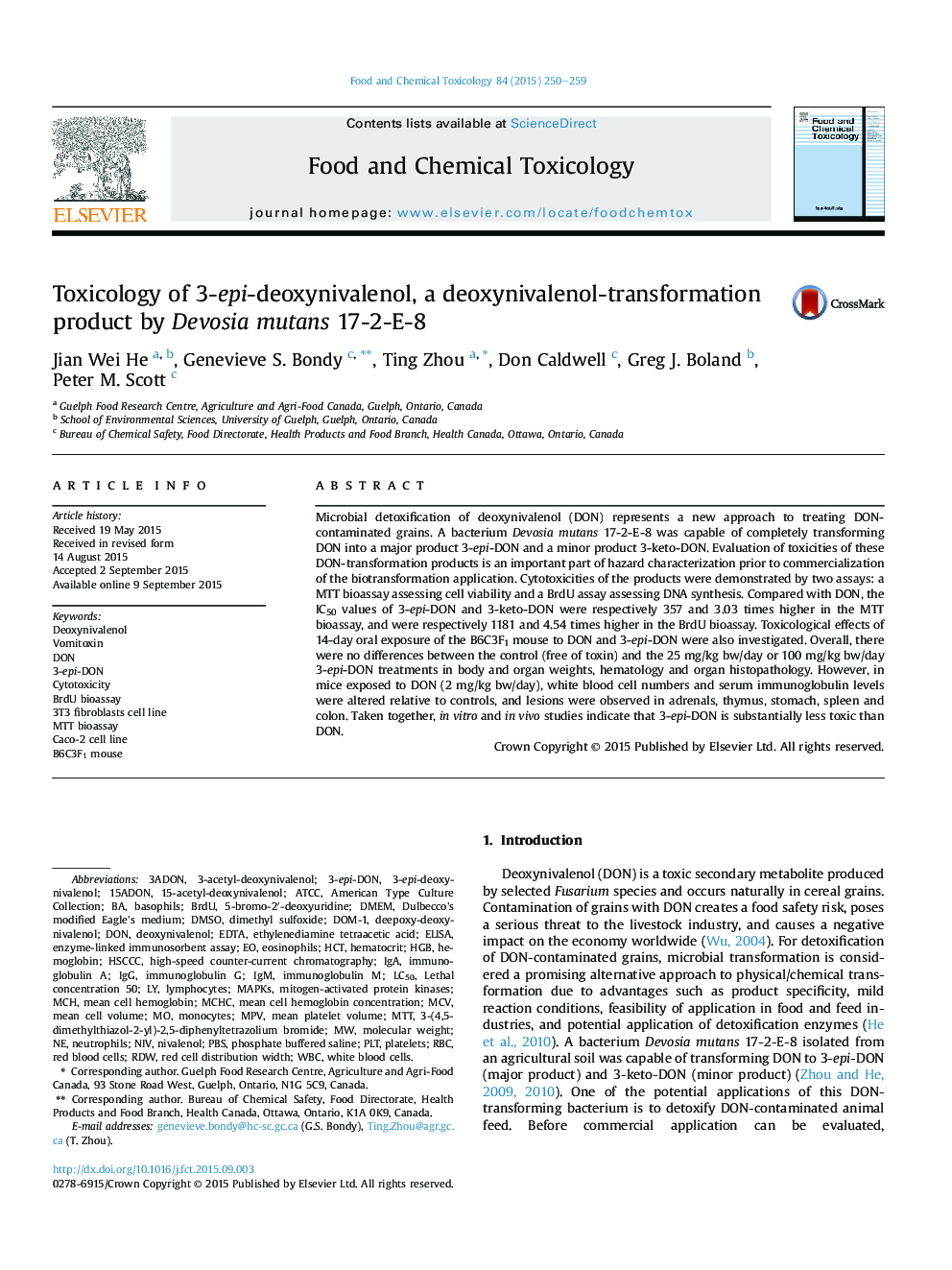| کد مقاله | کد نشریه | سال انتشار | مقاله انگلیسی | نسخه تمام متن |
|---|---|---|---|---|
| 5849539 | 1561760 | 2015 | 10 صفحه PDF | دانلود رایگان |

- The IC50 value of 3-epi-DON was 357 times higher than DON in a MTT bioassay.
- The IC50 value of 3-epi-DON was 1181 times higher than that of DON in a BrdU assay.
- 3-epi-DON was at least 50 times less toxic than DON in B6C3F1 mice.
Microbial detoxification of deoxynivalenol (DON) represents a new approach to treating DON-contaminated grains. A bacterium Devosia mutans 17-2-E-8 was capable of completely transforming DON into a major product 3-epi-DON and a minor product 3-keto-DON. Evaluation of toxicities of these DON-transformation products is an important part of hazard characterization prior to commercialization of the biotransformation application. Cytotoxicities of the products were demonstrated by two assays: a MTT bioassay assessing cell viability and a BrdU assay assessing DNA synthesis. Compared with DON, the IC50 values of 3-epi-DON and 3-keto-DON were respectively 357 and 3.03 times higher in the MTT bioassay, and were respectively 1181 and 4.54 times higher in the BrdU bioassay. Toxicological effects of 14-day oral exposure of the B6C3F1 mouse to DON and 3-epi-DON were also investigated. Overall, there were no differences between the control (free of toxin) and the 25 mg/kg bw/day or 100 mg/kg bw/day 3-epi-DON treatments in body and organ weights, hematology and organ histopathology. However, in mice exposed to DON (2 mg/kg bw/day), white blood cell numbers and serum immunoglobulin levels were altered relative to controls, and lesions were observed in adrenals, thymus, stomach, spleen and colon. Taken together, in vitro and in vivo studies indicate that 3-epi-DON is substantially less toxic than DON.
Journal: Food and Chemical Toxicology - Volume 84, October 2015, Pages 250-259